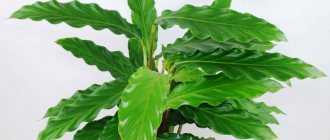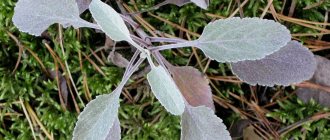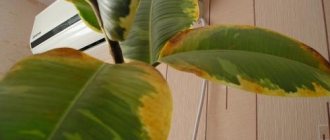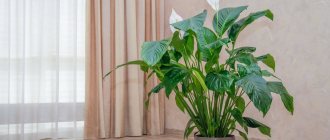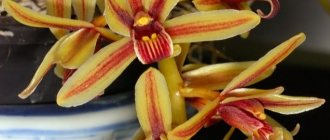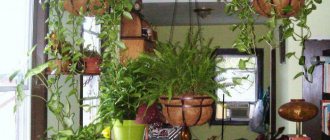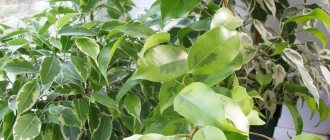Plant structure
They can be either unicellular or multicellular. The latter are divided into such divisions as green, brown and red algae, spores, gymnosperms and angiosperms. The algae organism can consist of one cell or many, but their structure lacks organs; the body is solid - called a thallus. In spores, gymnosperms and angiosperms (flowering plants), the presence of differentiated tissues and organs is observed. The latter are divided into vegetative and generative.
The first includes the shoot (stem and leaves), as well as the root. Many people are interested in the question: “Why are the leaves green?” Why this color? Also, many children ask the question: “Why are the leaves green?” And we will start this article with this topic.
Why is grass green: an explanation from biology
Why is grass green: Freepick
Biologists have also given an explanation of the color of grass. Their answers are quite close to the answers of physicists. However, they are determined by other factors, because biology focuses on other aspects that are important to it.
Each cell of a herbaceous plant contains organelles (small cell organs) called chloroplasts. They contain chlorophyll.
'Green leaf' is the meaning of the word chlorophyll in Greek. It is this substance that has the green color and colors the herbs in it.
Green grass with chlorophylls plays a vital role in the life of our planet:
- When the sun's rays fall on it, photosynthesis begins.
- This is the process during which carbon dioxide molecules are converted into oxygen, which all life on Earth breathes.
- Chlorophyll is a key substance for photosynthesis, so all herbaceous plants have a lot of it, and this gives them their green color.
When daylight hours decrease and there are fewer sun rays, chlorophylls are destroyed. This process is observed in the fall, when the grass turns yellow and dries out.
Why are the leaves green?
This color is due to the presence of chlorophyll. In the fall, this pigment is lost and the green leaf turns red, orange or yellow. Why is this substance needed? It is simply vital for the plant. Without it, the process of photosynthesis, which produces nutrients, cannot occur. Plants usually obtain organic chemicals only from this process. However, some species living in the lower layers of tropical forests do not receive enough light for adequate photosynthesis, so they resort to hunting small insects, thus compensating for the lack of organic compounds. These include sundew, lady's slipper, etc.
Why is grass green: an explanation from physics
Grass includes all plants whose stems are not woody. Many people think that it cannot be tall, so when you mention grass, they imagine an ordinary lawn. But tall and powerful bananas, about 6 m high, are also herbaceous plants because their stem is not wood.
The color of the grass is a rich green, a vibrant emerald, so beautiful that it's hard not to wonder why the grass is green. Physics gives the following explanation:
- The color of grass is related to the proportion of sunlight it receives and absorbs.
- People perceive the color from the spectrum that is reflected as visible. All remaining are absorbed by the plant.
This knowledge is often applied in life unconsciously or out of habit. For example, in the summer, people prefer light-colored clothing so that it does not get too hot in the sun. The fact is that light-colored clothes perfectly reflect all the rays and therefore do not heat up.
Sunlight has a full palette that includes all the colors of the rainbow. Grass absorbs everything except green. There is an explanation for this fact:
- Herbaceous plants are capable of photosynthesis (convert light energy into the energy of chemical bonds); they do not need green rays for this.
- To produce energy that will be transferred to cells, the pigment chlorophyll, with the help of which photosynthesis occurs, chooses shades of red and purple.
- Green pigments cannot provide the required amount of energy and can even damage cells. Therefore, this color is reflected by the grass, and the human eye catches it. In this way we perceive the fact that the grass is green.
This explanation is offered by physicists who study color theory and know everything about why people see the world in a certain color range.
Briefly about the structure of a plant cell
It consists of a plasma membrane, a cell wall made of cellulose, a cytoplasm that contains organelles, and a nucleus that contains DNA. The cytoplasm contains the following organelles: mitochondria, ribosomes, endoplasmic reticulum, vacuole (in an old cell there is one large one, in a young cell there are several small ones), the Golgi complex and plastids (chloroplasts, leucoplasts, chromoplasts).
Each of them performs its own functions. Mitochondria produce energy, ribosomes synthesize proteins, the endoplasmic reticulum (reticulum) produces lipids, vacuoles accumulate unnecessary substances, since it is impossible to remove them outside due to the solid cell wall, photosynthesis takes place in chloroplasts, chromoplasts contain pigments, leucoplasts store reserve nutrients ( mostly starch).
Colors and shapes of leaves in variegated plants (with photo)
Typically, the color of leaves on plants represents various shades of green, as well as variegated combinations of green with white and other colors. A plant leaf is called variegated, in some areas of which there is an insufficient amount of chlorophyll or no chlorophyll at all. Most often, the most interesting variegation is the result of the work of breeders, who get more and more new patterns and color combinations. The color and shape of the leaves are not interrelated. So, a long leaf can be both green and striped. The heart-shaped leaf can also have different color options.
Pink-variegated species include, for example:
Caladium
Cordyline
Cryptanthus
Hypoestes
The following species are considered red-variegated:
Bloom's Coleus (Coleus blumei, hybrids)
Irezina
Maranta
Tradescantia zebrine
White, cream or yellow variegation is present in some species:
Aglaonema
Chlorophytum sotosum
Euonymus (Eonymus)
Pisonia
The leaves of such species as:
Calathea
Stromanta
Their leaf blade shape depends on the period of plant growth.
Croton (Codiaeum) has a very special pattern in green, yellow and orange-red tones .
Many variegated leaves also differ in certain shapes and patterns:
In some, the edge of the leaf is outlined by a strip of a different color, as in Sansevieria trifasciata.
or Dracaena marginata
Other cultures have a marble pattern, for example:
Dieffenbachia
Scindapsus (Epipremnum)
Hypoestes
The leaves of one type of begonia - Begonia masoniana - are decorated with a black cross.
Look at the various variegated indoor plants in the photo, which shows a variety of colors:
How does photosynthesis occur?
This process takes place in chloroplasts, which are located in the cytoplasm of the cell. These organelles are single-membrane; their structure includes thylakoids - thin plates assembled into grana - stacks. They contain chlorophyll - that's why the leaves are green. In addition, chloroplasts contain ribosomes involved in the production of proteins, starch grains, as well as circular DNA molecules, which contain information about substances that must be synthesized in the cell.
During photosynthesis, plants absorb solar energy, water and carbon dioxide, and release oxygen as a by-product of the reactions. Enzymes that help carry out chemical interactions are located directly in the chloroplast matrix (the substance that fills it).
Research paper “Why are leaves green”
Introduction
From early spring to late autumn, our eyes are pleased with green vegetation in the form of grasses, bushes and trees.
After all, the flora of the Earth has about half a million different species, it occupies a huge part of our planet - forests alone cover up to 40% of its land surface; Plants play a significant role in the life of the Earth.
We love to be in the forest: we wander through the forest, breathe fresh air, watch nature, collect bouquets from leaves.
One day, while walking, we wondered why the leaves were green, not blue, not white, but green.
And with the onset of autumn, the leaves of the trees become different in color: yellow, red, orange. Who is this wizard who paints the leaves of trees?
And the teacher and I decided to reveal this secret and conduct research.
Hypothesis:
What affects the color of leaves in summer and autumn?
The relevance of research:
In autumn, the leaves began to change color. From green they began to turn into yellow, brown, orange colors. Which wizard helps paint the leaves?
Purpose of the study:
collect information about the processes occurring in leaves under the influence of sunlight; about the importance of the process of photosynthesis in leaves.
Research objectives:
- get acquainted with the processes occurring in the leaf under the influence of sunlight;
- determine the significance of the process of photosynthesis;
— develop research skills: conduct experiments, analyze results, draw conclusions;
- study literature on this topic.
Working hours
: 4 weeks - from October 15 to November 15.
Operating mode:
extracurricular activities.
Research base:
- books and reference books;
- Internet.
Research methods:
- collection and analysis of information from the literature;
- experiment;
- experience;
- observation and timing;
- description;
- analysis and comparison of activity products;
- result of work, conclusion.
Object of work:
- plant leaves.
Subject of study:
- change in leaf color.
Equipment and materials:
- presentation, popular science literature, reference books, photographs, place for conducting experiments;
- plant leaves.
Carrying out the experiment according to plan:
- Determining the location of the experiment and choosing a plant.
- Observations during the experiment.
- Comparative analysis of the results obtained. Conclusion.
- Research activities and their results
A leaf is a part of a plant shoot, its outer lateral organ, through which photosynthesis occurs.
In a green leaf, as the wonderful Russian scientist Klimenty Arkadyevich Timiryazev said, the very essence of plant life is that a plant is, first of all, a leaf. If there were no green leaves on the earth, there would be no life!
This is what we now need to find out. And what we learn has a direct relationship to the sun’s rays to the color of leaves and grass.
2.1.Air and plant
We are breathing. Air is a mixture of different gases. Oxygen is necessary for both people and animals.
Without oxygen, we would not live even three minutes. We inhale oxygen and exhale carbon dioxide, and the gas is harmful to us, but there is always very little hundredths of it in the air, and therefore we do not notice it. Firewood is burning in the furnaces; In order for them to burn, they need oxygen, and during combustion carbon dioxide is also released. Oxygen consumption is enormous: how many people on the globe, how many animals require it every second! There won't be enough supplies!
Meanwhile, the composition of the air does not change; there remains enough oxygen for breathing and always only its share of carbon dioxide. But who replenishes the air with oxygen, who cleans it of excess carbon dioxide?
Green leaf! It absorbs carbon dioxide into its cells and releases oxygen into the air, which is what it needs. And for what?
2.2.Sun and plant
The sun is the main source of life. A ray of sun falls on a leaf. Leaf cells contain a green substance called chlorophyll.
The green leaf is the great factory of life. The raw material for it is carbon dioxide - a component of air and water - it is always present in the plant, and energy is provided by light.
A ray of sunlight falls on a green leaf, and the “factory” begins converting water and carbon dioxide into starch and sugar. There is no light - and the work in the chlorophyll grains freezes.
The green color of grass and leaves is the color of chlorophyll. This substance plays a major role in photosynthesis. The process of photosynthesis is multi-stage.
It is triggered when a particle of light (photon) hits a chlorophyll molecule. But photosynthesis can continue in the dark - the process still does not stop. True, every second, not one photon falls on a chlorophyll molecule, but a lot.
Scientists distinguish two phases in the process of photosynthesis. The light phase occurs only in the light. Longer, dark, does not need light.
Chlorophyll absorbs red, blue and violet rays, but hardly absorbs green rays, which is why we see the leaf as green.
2.3. Leaves in autumn
If it’s autumn, everyone knows, leaves are walking in the sky, The leaves are different colors: yellow and red.
A. Pilatov
With the arrival of autumn, the leaves change their green color to yellow or red. This is due to the fact that the cells of a healthy leaf contain both green and yellow pigments. With the onset of cold weather, the green pigment (chlorophyll) is completely destroyed and yellow (xanthophyll) becomes a priority, and in a number of plants the formation of red pigment (carotene) also occurs.
In addition, along with the loss of the green pigment, chlorophyll, the leaf is no longer a “laboratory” for the production of organic substances necessary for plant nutrition. Starch, proteins, sugar, which were previously accumulated, are removed to storage areas, and mineral substances that are completely unnecessary for the tree are transferred to the leaves, which the tree gets rid of during leaf fall.
And red rays penetrate poorly into the depths of the sea, so in the tissues of red and brown algae, along with chlorophyll, there are other substances that absorb light. But, with the exception of some bacteria, chlorophyll is present in the cells of all living beings capable of photosythesis.
People have been observing nature for a long time, noticing everything that happens around them. And among the people there appeared signs associated with changes in the color of leaves.
Although the leaf has turned yellow, it falls off weakly - frosts will not come soon.
If in the fall the birch leaves begin to turn yellow from the top, then the next spring will be early, and if from below, then it will be late.
Yellow leaves will appear on the trees untimely - by early autumn.
2.4.The significance of foliage
Nowhere else in the whole world with all its diversity, nowhere - only here, in the green leaf, in the green part of the plant, the most important nutrients are produced.
If a green leaf suddenly disappeared, everything on our planet Earth would die out!
We humans get protein, starch, sugar both from the plants themselves and from the animals that we eat and which, in turn, feed on the plants.
A cow nibbles grass in summer and chews hay in winter. We drink cow's milk, eat cottage cheese, sour cream, butter. Milk is the main food for babies because it contains all the substances that are necessary for their health, for their development and growth. We eat cow's meat and it also contains essential nutrients. Chickens eat grain, and grain is also a plant, and chicken meat and eggs are built from essential nutrients.
And our main breadwinner is the green leaf.
- Experiment
Experience No. 1.
Required:
- a piece of foil
- scotch
- diluted alcohol
- a glass with thin walls
A piece of foil is attached to a living, untorn leaf of any plant; it can be cut out in the shape of a star or a circle. To prevent the foil from falling, you can attach it with a strip of tape.
After a week, you can see the result: a “photo” on a green piece of paper. In the place where the foil was and where, accordingly, no light entered, the sheet will turn yellow.
Conclusion: plants use sunlight to “cook” their food from it. Leaves contain a special green substance called chlorophyll. It captures solar energy. When autumn comes, there is little light, and without it the leaves cannot “cook” their food, they turn yellow and the leaves fall off because they cannot feed themselves.
Experience No. 2.
Required:
-leaf
-alcohol
-water
-tweezers
Place the green leaf in a glass with thin walls and fill it with diluted alcohol. Then we boiled water in a bowl and carefully lowered this glass into it - it would be something like a water bath. After some time, they took out the leaf with tweezers. Before us is an amazing transformation - the leaf has become discolored, and the alcohol has become emerald green.
And if you carry out this experiment with an edible plant (lettuce, for example, or spinach), the result will be a natural food coloring - it can be used to tint a cream or sauce. The process can be speeded up by first crushing the leaves and shaking the glass from time to time.
Conclusion: chlorophyll dissolved in alcohol. This means that the leaves contain green color and particles of chlorophyll.
Conclusion
Summing up the results of the research work, we can conclude that the goal we set was achieved. We examined why leaves are green and compared evidence-based, scientifically proven findings with research on the topic. We learned that leaves change color in the fall due to changing conditions outside, because... The air temperature drops in autumn and the amount of sunlight decreases, so pigments of a different color (carotene, xanthophyll) come into their own. The leaves turn red, yellow, brown.
In addition, we have collected photographic material that can be used in environmental lessons when introducing the natural world.
An ocean of plants surrounds us, and they are all green. The grass is green, the leaves of trees and flowers are green. Even the words “plants” and “greens” essentially mean the same thing. “It’s very green here,” people say when they see a lot of trees, bushes, green grass. “The house is surrounded by greenery,” “green valley” - in other words, there are a lot of plants here and they are all green.
Bibliography
“Big school encyclopedia. T.1. Natural Sciences". Author-compiler S. Ismailova. Moscow, “Russian Encyclopedic Partnership”, 2004.
I.N. Ponomareva, O.A. Kornilova, V.S. Kuchmenko “Biology: Plants. Bacteria. Mushrooms. Lichens." Textbook for 6th grade of secondary school. Moscow, Ventana-Graf Publishing House, 2003.
Vinogradova N. F. The world around us: grades 3-4: Textbook for students of educational institutions: at 2 o’clock - M:. Ventana-Graf, 2009.
Encyclopedic Dictionary of a Young Naturalist / Comp. M. E. Aspiz. – M.: Pedagogy, 1996.
Kozlova T.I. Explanatory dictionary for schoolchildren / Ed. N.P. Kabanova. – 4th ed. – M.: Iris-press, 2005.
https://www.numama.ru/
https://beaplanet.ru/
10
What are the leaves made of?
In this organ you can find several types of plant tissue, there are four of them. These are the epidermis, mesophyll, conductive tissues (xylem and phloem), and mechanical tissues. Photosynthesis occurs in the mesophyll, or parenchyma. You can see the cells of a green leaf under a microscope. This is the upper ball - the epidermis.
Its cells are located close to each other, but this layer contains pores that allow them to absorb carbon dioxide and release oxygen, as well as regulate water and temperature balance. The parenchyma (mesophyll) is divided into two layers - one of columnar cells, the other of spongy cells. The former contains a larger number of chloroplasts than the latter. Xylem is represented by vessels through which liquid is transported from the roots to the leaves, that is, upward, and phloem consists of sieve-like tubes through which water is transported down. Mechanical fabrics provide the sheet with rigidity and stability, and a certain shape.
Why is the grass green?
Plants get their green color from the chlorophyll they contain. It is he who is responsible for absorbing light energy and transferring it to molecules, which, in turn, synthesize organic substances. Receiving light is necessary for photosynthesis, a special process during which plants produce organic substances from carbon dioxide and water. This type of nutrition is the main one for plants, and accordingly, chlorophyll is necessary for their normal, full-fledged existence.
What color are the leaves?
However, there are also mutant plants without chlorophyll. They are found in many plants, such as peas. Such mutants die immediately as soon as all the nutrient reserves of their seed are depleted. In addition to the usual non-chlorophyll plants, there are also parasitic plants that exist and receive the nutrients they need at the expense of other plants.
As we know, plants can have other colors besides green. Thus, the anthocyanin pigment is responsible for the red, blue and purple colors, for example in violets. Chlorophyll is also present in such plants, but anthocyanin somehow “masks” it so that the green color does not remain. Anthocyanins also affect the color of flower petals and fruits. Depending on the changes that occur during the ripening of fruits and withering of flowers, a fresh bud may be in one color, and an adult blooming flower in another. For example, the buds of soft lungwort are pink, and its flowers are blue-violet.
There are also plants with almost black leaves. But they have this color not because of some special pigment, but because of the presence of the same chlorophyll, only in very large quantities. Such plants are most often found in tropical forests. The high density of chlorophyll per leaf area allows the leaves to absorb almost all the sunlight that hits them. This concentration makes the green color so saturated that it appears literally black.
Also, the color of plants can change their color. So, in the fall we see how the foliage of trees gradually changes its color. The leaves here and there turn yellow, orange, purple, and then fall off. This happens because with the onset of cold weather, chlorophyll begins to break down. Plants try to extract nitrogen from chlorophyll and store it in their special “storehouses”. Other pigments, unlike chlorophyll, need less heat and light, so it is other colors that are “activated” in the cold season. And in order not to waste energy on nutrition, plants are forced to get rid of excess load - and shed their leaves. (You can learn more about the behavior of plants in the cold season in the article “Why do the leaves on trees turn yellow and fall off in the fall?”.)
Sometimes red color appears on young leaves. Here the anthocyanin pigment performs a protective function. It is difficult for a young, barely blossomed leaf to carry out photosynthesis, and anthocyanin protects it from excessive light. The pigment is a kind of screen that reflects excess light and prevents excess rays from reaching the leaf.
Biology. 5th grade. Textbook
The textbook complies with the Federal State Standard of Secondary General Education, is recommended by the Ministry of Education of the Russian Federation and is included in the Federal List of Textbooks.
Buy
Why are the leaves yellow in autumn?
With the development of genetic engineering, man has learned to create new types of plants with colorful leaves. It has become possible to obtain completely new, unusual colors, or to recreate a specific color. Accordingly, judging by such discoveries, it is possible to deduce the role of pigment in the meaning of physiology.
If it is necessary to establish the physiological role of the pigment, then the following analysis is carried out. Selected for work:
- a wild plant with a pigment that is found only in certain conditions,
- a mutant plant lacking this pigment,
- a mutant plant in which such pigment is always present.
After observing and conducting a series of experiments, it is possible to establish the reason and purpose for the presence of such a pigment in plants, and also make a forecast of what will happen if the plants lose it altogether or, conversely, become fed up with it.
Biology. 6th grade. Textbook
The textbook complies with the Federal State Standard of Secondary General Education, is recommended by the Ministry of Education of the Russian Federation and is included in the Federal List of Textbooks.
Buy
What else should I read?
Human biological rhythms
Mendel's genetic laws
The structure of the human respiratory system
Stages of energy exchange
#ADVERTISING_INSERT#

